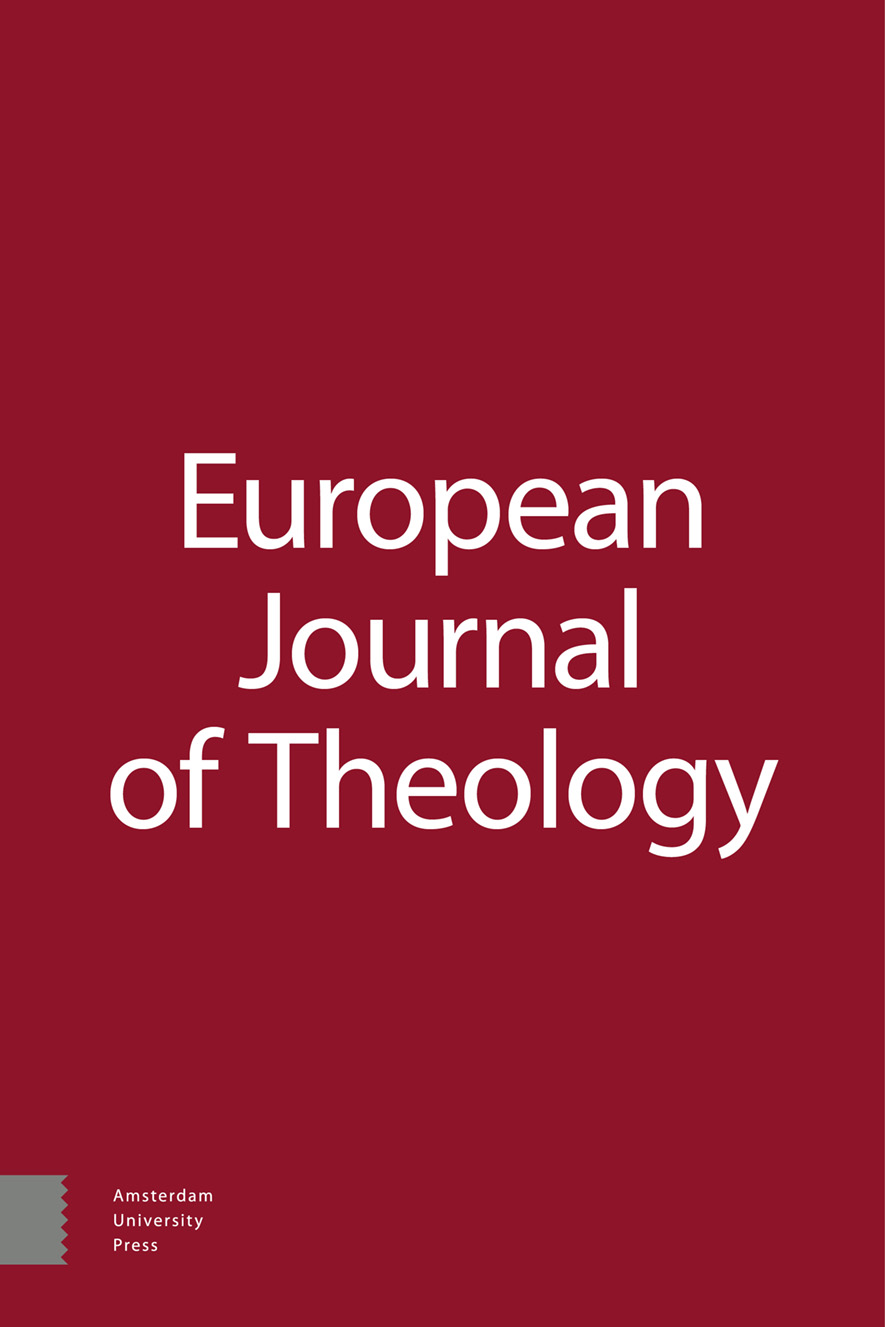-
oa Not Just a New Book but a New Kind
A Review of Armin Baum’s Literary-Historical Introduction to the New Testament
- Amsterdam University Press
- Source: European Journal of Theology, Volume 29, Issue 2, Sep 2020, p. 235 - 249
-
- 01 Sep 2020
Abstract
En dépit de son titre, Introduction au Nouveau Testament, cet ouvrage diffère de ceux qui appartiennent ordinairement à ce genre. Il ne traite pas des auteurs des cinq premiers livres du canon du Nouveau Testament (les Évangiles et les Actes), ni de leur date de rédaction, mais se concentre plutôt sur la place occupée par ces écrits dans l’histoire de la littérature. Baum montre que les auteurs du Nouveau Testament ont pris les Écritures vétérotestamentaires comme modèle et exemple. Cela implique que ce n’est pas l’auteur mais le message qui tient la place centrale. Le but de ces textes est de reproduire et de transmettre le message de Jésus de façon fiable et, au regard des conventions de l’époque, ce but est bien atteint. Baum réussit habilement à tirer parti des approches historico-critiques conventionnelles sur l’origine des évangiles, et particulièrement pour ce qui concerne les synoptiques, mais il montre que, si on laisse de côté les limitations implicites imposées par une certaine vision du monde, ces approches peuvent donner des résultats complètement différents. L’auteur de la recension présente cette introduction sortant de l’ordinaire, expose les résultats les plus importants auxquels Baum parvient et termine en offrant quelques suggestions concernant des domaines qui mériteraient eux aussi un traitement approprié.
, SummaryAlthough the title Introduction to the New Testament suggests otherwise, this comprehensive book is no ordinary introduction. It does deal with the authors of the first five books of the New Testament canon (Mt, Mk, Lk, Jn and Acts) and the dates of their writings, but the focus is on the place of these writings in the history of literature. Baum makes clear that the authors of the New Testament used the Old Testament scriptures as models and examples. This means that not the author, but the message takes central stage. The aim is to reproduce and transmit the message of Jesus in a reliable way, and by ancient standards this aim is achieved. In an astute way Baum integrates conventional historical-critical approaches to the origin of the Gospels, especially in the field of Synoptic studies, but he shows that without the implicit limitations of a certain world view, these approaches can also lead to completely different results. The present review article introduces this unusual Introduction, presents Baum’s most important results and at the end makes some suggestions as to which areas are still awaiting appropriate discussion.
, ZusammenfassungAnders als der Titel Einleitung in das Neue Testament nahelegt, handelt es sich bei diesem umfassenden Werk um keine gewöhnliche Einleitung in das Neue Testament. In ihr geht es zwar auch um die Verfasser der ersten fünf Bücher des neutestamentlichen Kanons und um die Datierung ihrer Schriften (Mt, Mk, Lk, Joh, Apg). Aber der Schwerpunkt liegt auf der literaturgeschichtlichen Einordnung dieser Schriften. Dabei wird deutlich, dass sich die ntl. Verfasser an atl. Vorbildern und Vorgaben orientieren. Das bedeutet, dass nicht der Verfasser, sondern die Botschaft zentral ist. Der zuverlässige Wieder- und Weitergabe der Botschaft Jesu ist das Ziel, und dies wird nach antiken Maßstäben auch erreicht. Das Werk von Baum integriert herkömmliche historisch-kritische Ansätze über die Entstehung der Evangelien, insbesondere aus dem Bereich der Synoptikerforschung, in kluger Weise, zeigt aber, dass dieselben ohne die impliziten weltbildlich bedingten Verengungen auch zu ganz anderen Ergebnissen führen können. Der vorliegende Rezensionsartikel führt in diese ungewöhnliche Einleitung ein, präsentiert die wichtigsten Ergebnisse von Baum und gibt abschließend einige Hinweise, welche Bereiche noch auf eine angemessene Bearbeitung warten.
]

